Failed Attempts at Cross-Border Economic Integration: The View from Sinuiju
This two-part series aims at explaining the irreconcilable Chinese and North Korean strategies for economic integration, using the Dandong-Sinuiju area to illustrate some of the larger problems in their bilateral economic relationship. This part focuses on the North Korean-led economic integration projects in Sinuiju. It concludes that, while coordination with the Chinese side has proven difficult, it has not prevented Pyongyang from awkwardly trying to implement one-sided economic integration strategies. Part two will describe how China itself has tried, in vain, to impose its own views on economic integration of these two regions.
Introduction
When the mid-1990s famine clearly exposed the fragility of the North Korean economy and its need for reform, the North Korean leadership decided to embark on a limited domestic reform agenda (the so-called “July 1st Economic Management Improvement Measures” enforced in 2002) to expand trade relations with foreign countries, especially China. In the early 2000s, Kim Jong Il’s active economic diplomacy towards China was instrumental in kickstarting a spectacular increase in trade and investment between the PRC and the DPRK, as shown in the table below. While this wave of Chinese investment definitely contributed to expanding the DPRK’s foreign trade and getting the North Korean economy back on track after the mid-1990s famine, it also enshrined the DPRK’s “inferior” position in the global value chain as a supplier of raw, unprocessed resources such as mineral and ores.
A closer look at some of the DPRK-PRC economic integration projects envisioned by Pyongyang suggests that the North Korean leadership, as early as 2001, was concerned about the terms of its economic relationship with China. Sinuiju, as the main gateway for economic cooperation with China, is a case in point. Pyongyang has been awkwardly but repeatedly trying to develop this city into “Northeast Asia’s Hong Kong,” hoping to attract massive amounts of foreign direct investment (FDI) and technology to fuel a more independent economic growth pattern. This has resulted in numerous unsuccessful attempts at opening Sinuiju and imposing a DPRK-centric regional economic cooperation pattern, with often limited coordination with authorities on the other side of the border.
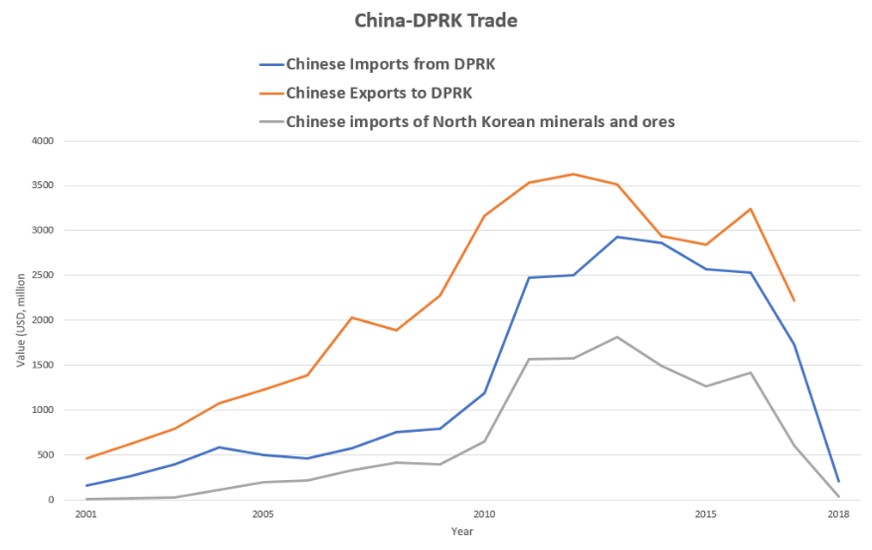
Ambitious and Unilateral: The Sinuiju Special Administrative Region
After first meeting Kim Jong Il in Shanghai in 2001, and collaborating with Pyongyang on horticulture projects, Chinese-born Dutch national Yang Bin (then the second-richest man in China) was eventually asked by his Korean joint venture partner to help the DPRK develop a “Special Zone” in Sinuiju.[1] The Sinuiju Special Administrative Region (SAR) constituted the DPRK’s most audacious attempt at economic and political reform. As Patricia Goedde has explained,[2] the ad hoc Sinuiju Basic Law was heavily modeled after Hong Kong’s own Basic Law, and was it was drafted by several prominent lawyers from Macau and Hong Kong as the SAR was supposed to be established as a de jure autonomous entity within the DPRK. Under this arrangement, the central government would remain in charge of military and police matters,[3] while local governance organs would run the economy and all aspects that mattered to investors. The SAR would be allowed to use its own flag and coat of arms; there were also plans to make Yang Bin the governor of the zone, meaning that Pyongyang would transfer executive power of its fifth-largest city to a foreigner.

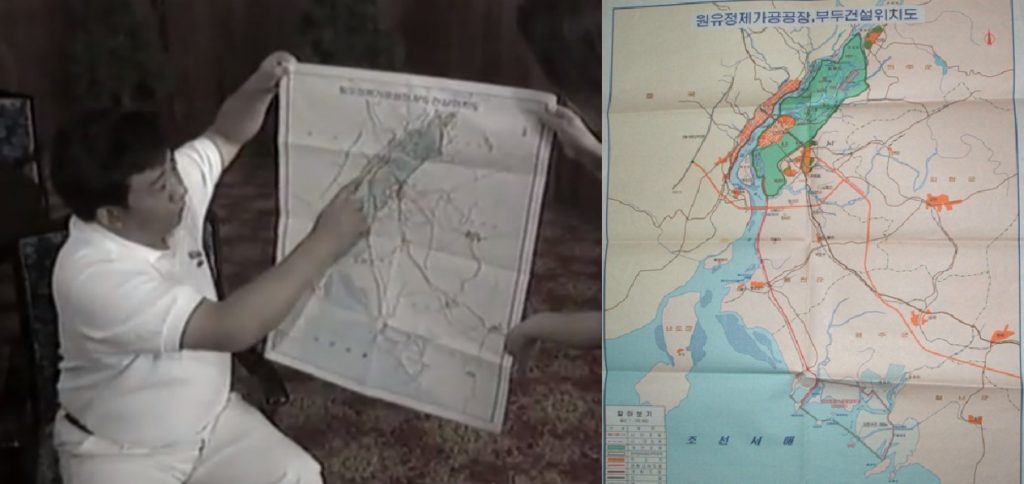
However, on October 4, 2002, the Shenyang police arrested Yang Bin. He was charged with fraud, tax evasion and corruption and was eventually jailed for 17 years. (He was released in 2018 and reappeared in Taiwan.)[5] It is widely acknowledged that Beijing took this radical move to strangle the SAR in its crib, as subtly suggested in an official press release by the Chinese Ministry of Foreign Affairs: “China developed its own ‘Socialist market economy with Chinese characteristics’ based on its very own situation, and this model might not necessarily be suitable for other countries.”[6]
The SAR’s many important and obvious weaknesses have been discussed at length. But much less attention has been paid to what these weaknesses reveal about Pyongyang’s views on economic integration at that time. Yang Bin was overly ambitious and merely transplanted Chinese experiences and practices to a North Korean landscape, hoping to raise as much as $400 billion in foreign direct investment from private companies but also from international financial institutions and multilateral development banks such as the International Monetary Fund and the Asian Development Bank. The lack of coordination with the Chinese side, until very late in the process,[7] is also considered a major reason for the project’s failure. The Chinese ambassador in Pyongyang was only notified on June 10, 2002, that a SAR would be opened in Sinuiju three months later. Yang Bin was already under investigation for the mismanagement of his pharaonic Holland Village near Shenyang, and the official announcement of the SAR certainly prompted China to take decisive action to halt the DPRK’s boldest attempt at reform.
Beijing’s abrupt move was a clear sign of its exasperation over Pyongyang’s unilateral attempts at economic integration. In fact, available information on the SAR’s development plan suggests that Yang Bin and Pyongyang wanted to turn Sinuiju into a trade and financial service hub, an economic development strategy that could have potentially competed with the already struggling Chinese Northeast. By leaving economic integration initiatives to North Korea, China would have remained a passive actor in the DPRK’s economic opening, unable to control the development of cross-border economic integration processes and China’s gradual economic expansion towards North Korea. Beijing preferred to prevent the establishment of the SAR and instead pursue economic engagement strategies that were mostly piloted by small-scale, private Chinese businesses (besides a few important mining ventures). This strategy much better suited Chinese interests: In addition to the potential transformative effect on the North Korean economy, the DPRK would have served as a de facto captive export market and an endless supply of cheap minerals and skilled labor. The Chinese strategy would have left the North Korean side of the border with limited development opportunities besides following China’s gradual outsourcing of production capacities to the SAR or, even less appealing, becoming a client state of China.
Although DPRK-PRC relations have improved after years of mistrust,[8] Kim Jong Un has alluded to the problem of the “one-sidedness” (일변도/一边倒) of North Korean trade. One North Korean trade official in Jilin Province explained to the author that China had an imperialist attitude (帝国主义) towards the DPRK.[9] Indeed, it is revealing that, even after Beijing abruptly ended the SAR experience, Pyongyang has consistently tried to develop Sinuiju as a hub for more value-added industrial production, with the apparent intent of competing with Chinese businesses. After joint attempts at finding an acceptable compromise for both parties in the Hwanggumpyong-Wiwha (Wihwa) Special Economic Zone (SEZ) fizzled, more recent attempts at turning Sinuiju into a successful zone suggest a return to rigid North Korean policymaking and the imposition of an economic integration model, first and foremost designed to fuel the DPRK’s independence.
SEZ Proliferation in North Phyongan (Pyongan) Province
From 2013 to 2018, more than 20 SEZs were opened in North Korea, including the Sinuiju International Economic Zone and many others in the Sinuiju area. These SEZs are often dismissed as failed and desperate attempts to attract foreign capital and technology, but they also underscored North Korea’s determination to impose its vision of cross-border economic integration based on its own needs and with limited consideration for Chinese interests.
Just like Hwanggumpyong, the Amrokgang (Amnokgang/Yalu River) Comprehensive Economic Zone is a desert and flood-prone island, located at the foot of the Hushancun Great Wall near Dandong. The DPRK hopes to transform the 6.6 square kilometer Amrokgang zone into a tourism folk park with Chinese capital, which would require major investments in infrastructure in an area that clearly is not the most scenic place in North Korea. The overwhelming majority of Dandong businessmen interviewed by the author, including those involved in the tourism center, had no or very limited knowledge about investment opportunities in this area, suggesting that the project is still in its infancy. Although the Chongsu Economic Development Zone, located further east on the Chinese border, appears more mature, its chances of success also appear very slim given its remoteness and the lack of infrastructure on both sides of the border. Media reports show that the zone’s development blueprint has already been made public, with Chinese businessmen and officials attending its ribbon cutting ceremony in 2014. The blueprint shows that it will be split into several areas and, just like the one in Manpho (Manpo), focus primarily on tourism.
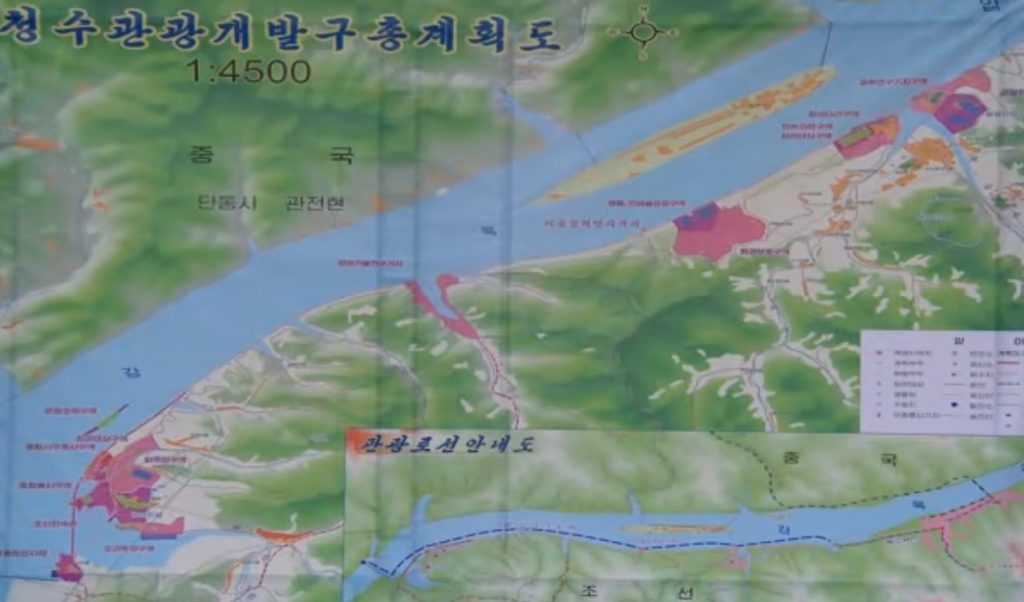
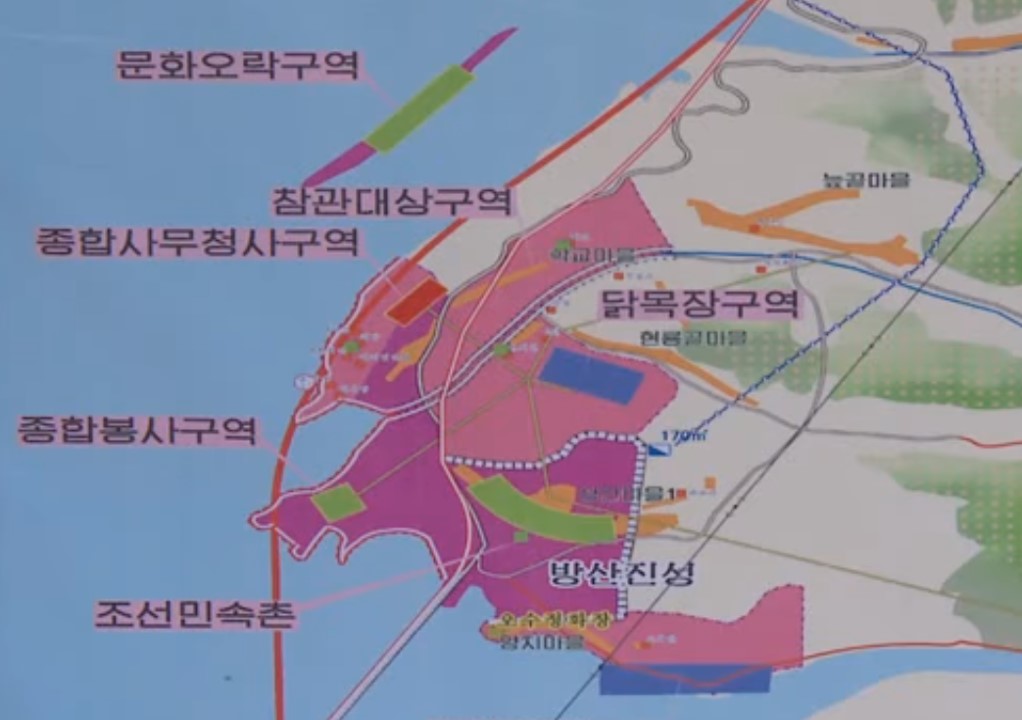
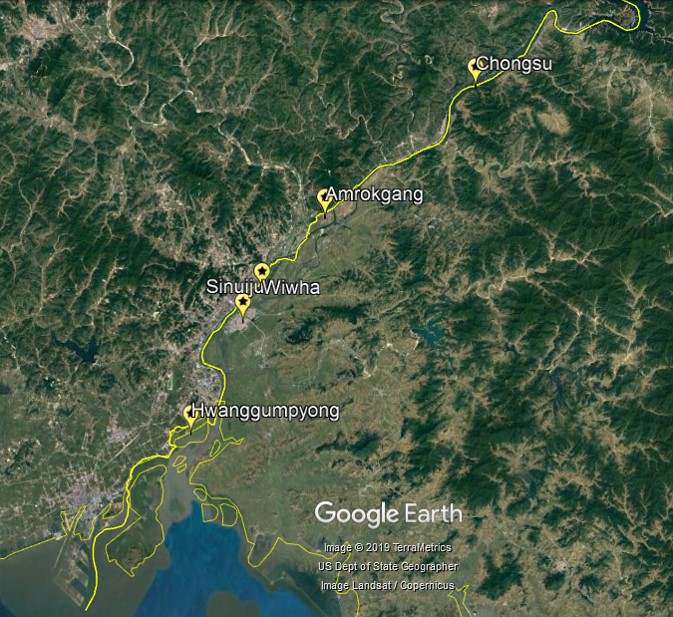
More interesting is the Sinuiju International Economic Zone (SIEZ), a politically much less ambitious project than the SAR, which is unsurprising since it has been entirely designed by the North Koreans. The SIEZ, however, seems particularly important in Pyongyang’s calculations, as suggested by its specific status of a “central-level” SEZ (contrary to Amrok, Chongsu and most other zones).[12] The project is also backed by an ad hoc North Korean state-owned company, the Sinuiju Zone Development Corporation, as is the case with the central government’s pet project, the Wonsan-Kumgangsan (Mount Kumgang) area. As available SIEZ investment guides explain, zone managers explicitly aim at attracting investment in high or even very high value-added sectors such as software development, computer manufacturing, automobile production, trade-related services and tourism. This ambitious sectoral focus is not surprising given Kim Jong Un’s emphasis on science and technology and, more generally, the North Korean belief that technological development allows more independent economic growth. These hopes are not only unrealistic given the current context and the economic approach favored by China over the last two decades; it also turns out that establishing Sinuiju as a trade hub undercuts Chinese development strategies for the other side of the border. (As part two of this series will explain, Dandong and Liaoning Province authorities have long tried to impose trade patterns from the Chinese side.)
In addition to large investments, the North Korean development blueprint for Sinuiju would require a large-scale, urban restructuring of the city, as the contrast between the following maps shows.[13]
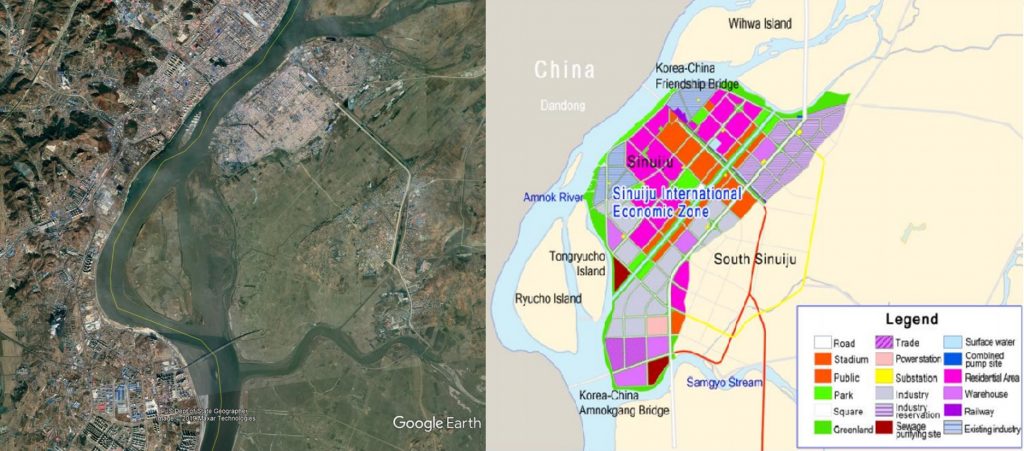
The blueprint of zone planners would also connect the recent New Yalu Bridge (新鸭绿江大桥) to the North Korean road network, redesign the entire transportation grid, build a new power plant and cover the “green belt” that splits Sinuiju in half with industrial estates. Because the zone suffers from frequent flooding, there are also plans to dig a 100 meter-wide canal in order to divert, at great cost, about 10 percent of the Yalu River stream. It is quite likely that the North Korean leadership expects Chinese investors to bear most of the massive costs of what would amount to a complete redesign of Sinuiju’s urban area, either by a single company (the “Kaesong model”) or through the publication of calls for investments in specific projects. Although the North Korean government has recently shown its ability to focus labor and financial resources on the development of SEZs that are aimed at fostering economic cooperation with foreign partners, such as the Wonsan-Mt. Kumgang or Samjiyon-Mubong areas, Pyongyang is less visibly committed to Sinuiju. It is quite likely that Pyongyang believes that SEZs located near the Chinese border have more strategic importance for Chinese actors, in sharp contrast, for instance, to Wonsan, and Beijing should be more willing to pay for them.
Conclusion
The city of Sinuiju and the North Korean vision of its future are emblematic of bilateral economic relations that remain largely dysfunctional. Part two of this series will show that in Dandong, on the other side of the border, Chinese local authorities have paid limited attention to North Korean economic integration strategies, preferring instead to accelerate existing economic engagement patterns.
- [1]
Details about Yang Bin’s story can be found in his heavily hagiographic biography: Guan Shan, Kim Jong II’s Godson Yang Bin: From Orphan to Sinuiju SAR Chief (Hong Kong: Fortune Gate, 2009) chapter 5.
- [2]
See: Patricia Goedde, “Law ‘Of Our Own Style’: The Evolution and Challenges of the North Korean Legal System,” Fordham International Law Journal 27, no. 4 (2003): 1265-1288; and Joongi Kim, “The Challenges of Attracting Foreign Investment into North Korea: The Legal Regimes of Sinuiju and Gaeseong,” Fordham International Law Journal 27, no. 4 (2003).
- [3]
“Basic Law of the Sinuiju Special Administrative Region,” The Fire Bringer, accessed October 23, 2019, retrieved from Wayback Machine Internet Archive website, https://web.archive.org/web/20160616233602/http://www.ybpeace.com/english/article_show.asp?id=50. See articles 6, 7, 8.
- [4]
Wikipedia contributors, “Sinuiju Special Administrative Region,” Wikipedia, The Free Encyclopedia, last updated May 28, 2019, https://en.wikipedia.org/wiki/Sinuiju_Special_Administrative_Region.
- [5]
“Wei xinyizhou zhaoshang? Jinzhengri yizi zai Taiwan puyan, 為新義州招商?金正日義子台灣赴宴 (Invest in Sinuiju? Kim Jong Il’s adopted son attends banquet in Taiwan),” Oriental Daily, October 3, 2018, http://beta.orientaldaily.com.my/s/262112.
- [6]
- [7]
According to Guan Shan, Chinese lawyers Tong Lianfa, among others, assisted with the drafting of the law. Tang now teaches and research at Liaoning University.
- [8]
Ruediger Frank, “The 7th Party Congress in North Korea: An Analysis of Kim Jong Un’s Report,” The Asia Pacific Journal 14, no. 8 (2016).
- [9]
Interview in Chinese with the author, February 2016.
- [10]
“Chongsu Tourist Zone Opens in DPRK,” North Korea Today, November 3, 2014, YouTube video, 0:45, https://www.youtube.com/watch?v=uHHn0Iz8dnY.
- [11]
Ibid.
- [12]
Several North Korean officials have been unable to explain to the author about the difference of central-level and provincial-level zones. One possible explanation is that central-level SEZs are piloted by the central guidance authority for SEZ (특수경제지대지도기관과) in Pyongyang, others by provincial powers. Field research interviews with North Korean officials in Wonsan and Pyongyang, May 2016.
- [13]
Stephan Haggard, “The Sinuiju Zone and the Tin Ear Problem,” Peterson Institute for International Economics (PIIE) North Korea: Witness to Transformation (blog), February 2, 2016, https://www.piie.com/blogs/north-korea-witness-transformation/sinuiju-zone-and-tin-ear-problem.
